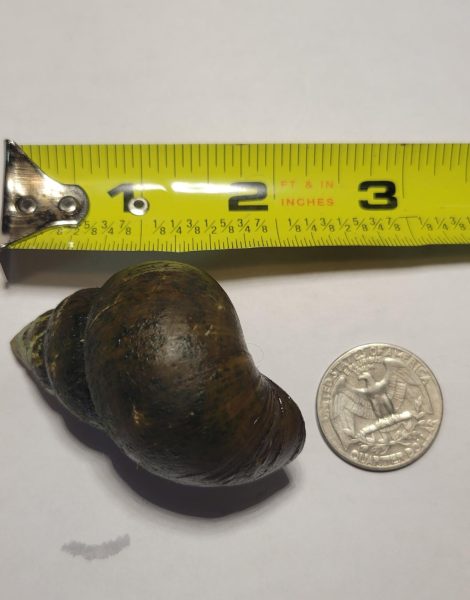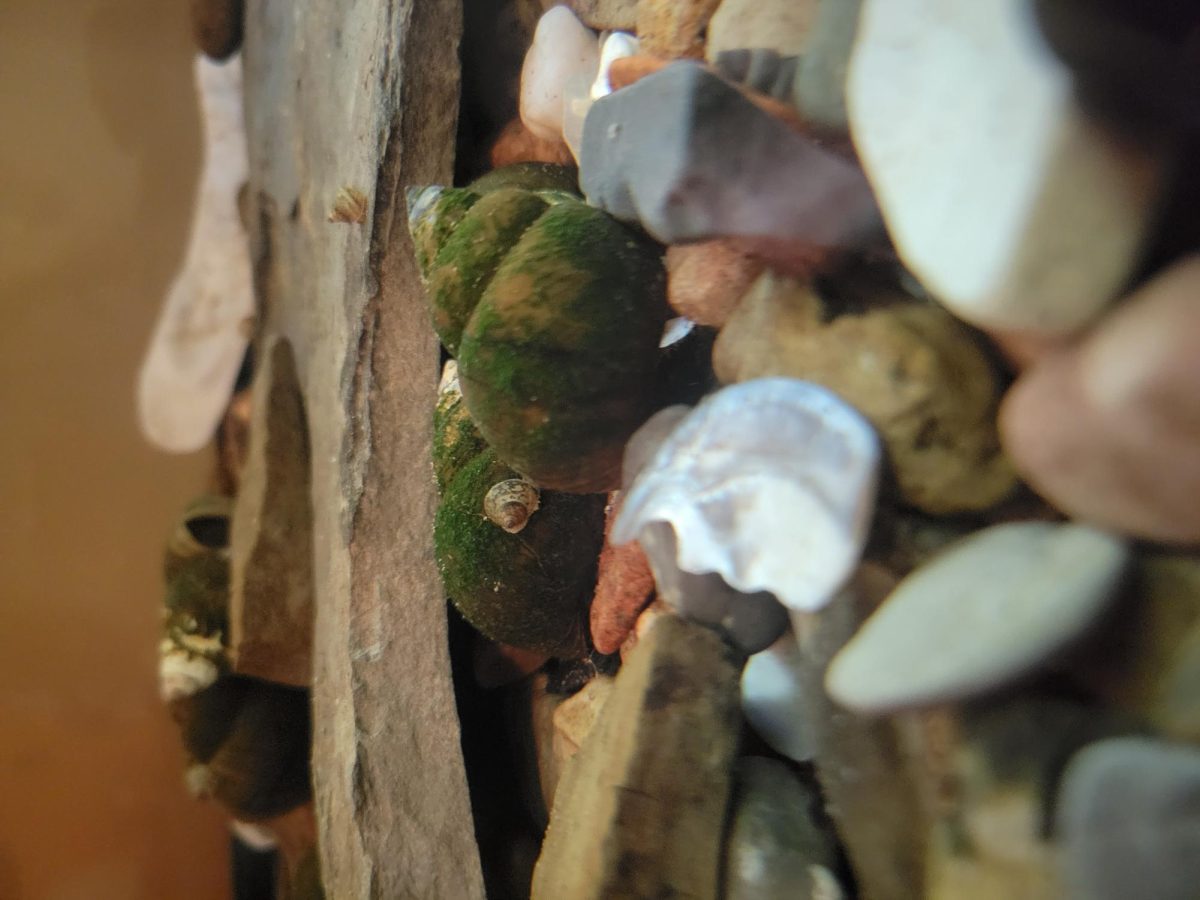The Japanese Mystery Snail, Cipangopaludina japonica, is a rapidly multiplying threat to our freshwater ecosystems. These snails are one of three species of invasive “Mystery Snail” in the U.S., alongside the Chinese and Banded Mystery Snails. They are identified by their large size compared to other freshwater snails, with shells having a maximum length of 2.5 inches and their light-brown to olive-green shell hue.

While seemingly small, these snails pose a serious threat. Cipangopaludina japonica carries many parasites, such as Aspidogaster conchicola. Some of these are zoonotic, meaning they can be passed to humans. Another effect of their presence is their habit of blocking water pipes, and hence the flow of water through these pipes. They negatively impact native gastropods, often through competition for resources.
These snails are native to Japan, Taiwan, and Korea; it is believed that they made their way into the US having been introduced to the Great Lakes as a food source for catfish. They also happen to be popular aquarium snails, so it is possible that aquarium owners decided to release them into nearby waterways, not knowing the destruction they would cause.
Japanese Mystery Snails can live up to five years under the right conditions; this time, the average female will produce 170 baby snails, though it is possible for each female to produce 100 young each brood. This means that a single mature female can create an entire walk of snails (Walk is one of three terms for a group of snails, along with escargatoire and rout).
They prefer freshwater areas with muddy terrain, low levels of plants, and four meters or less of water above them. In Pennsylvania, they can be found in the Juniata River. Here, they feast on microalgae using a tongue-like appendage called a radula. This functions as a tongue and teeth in one.
As a method of self-preservation, these snails possess a shell; to accompany this, they have what is known as an operculum. This is a hard plate that covers the shell’s opening when the snail is inside.
If you find this or any other invasive species here in PA, the health of the ecosystem needs to report it. Take a picture, specify the picture’s location, and call 1-833-INVASIV. (1-833-468-2748)






























